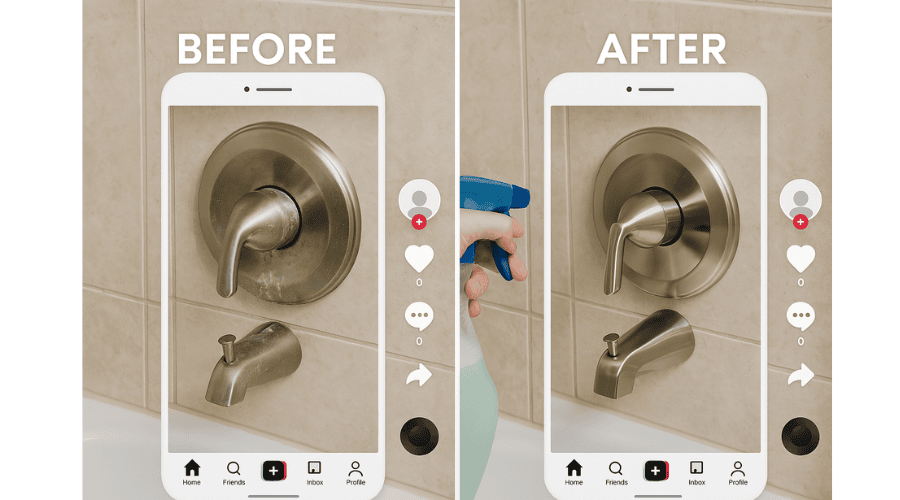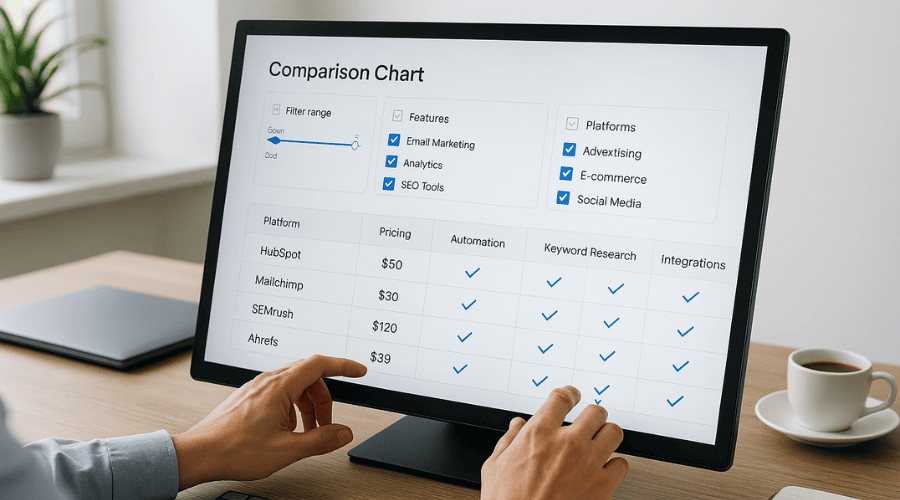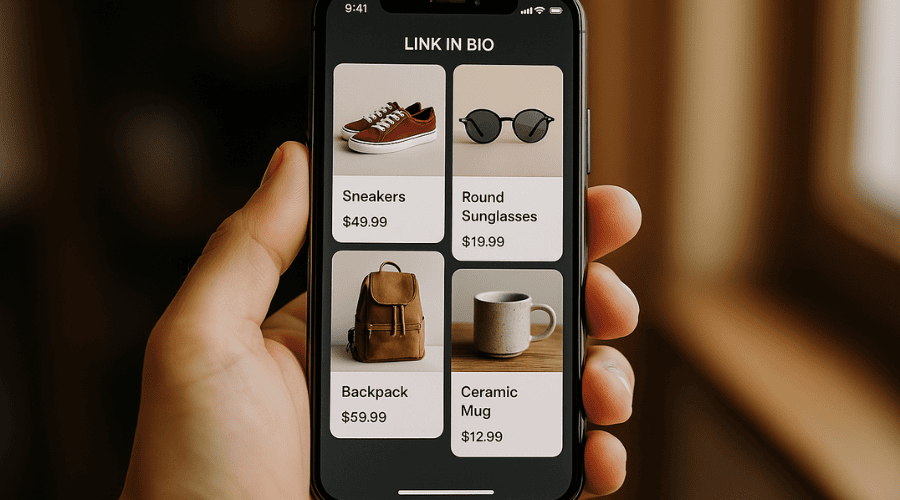10 ways of becoming an affiliate without a blog

Beyond the Blog: 10 Ingenious Ways to Succeed as an Affiliate Marketer Without Writing a Single Post
The affiliate marketing world has a well-worn path: start a blog, build traffic, monetize with affiliate links, and watch the commissions roll in. But what if writing isn’t your strength? Or what if you’re simply tired of competing in an increasingly saturated blogosphere where everyone seems to be following the same playbook?
Here’s a radical thought: you don’t need a blog to succeed as an affiliate marketer. In fact, ditching the traditional approach might be your secret weapon in a world where attention spans are shrinking and content consumption habits are rapidly evolving.
Let’s explore ten innovative, blog-free paths to affiliate marketing success that leverage different skills, platforms, and psychological triggers.
1. The Micro-Video Maestro

The Approach: Create bite-sized video content (15-60 seconds) demonstrating products in action or highlighting specific pain points they solve.
Why It Works: Short-form video content on platforms like TikTok, Instagram Reels, and YouTube Shorts taps into how modern consumers prefer to discover products—through authentic, visual demonstrations rather than lengthy written reviews.
Success Strategy: Focus on creating “before and after” scenarios, unexpected use cases, or “I wish I knew this sooner” moments that create instant desire. Your Amazon Finds or “TikTok made me buy it” series could become the next viral sensation, with your affiliate links waiting in your bio or comments.
Pro Tip: Use a link-in-bio tool that organizes multiple affiliate links by video, creating a shoppable gallery of everything you’ve recommended.
2. The Voice-First Affiliate

The Approach: Launch a podcast or create audio content where you naturally discuss products you love or interview founders of brands with affiliate programs.
Why It Works: Podcasts create intimate connections with audiences through voice, building trust over time. The format allows for deeper discussion of products than most written content, and listeners often consume episodes during otherwise “dead” time (commuting, exercising, chores).
Success Strategy: Rather than creating a “review show,” build content around a lifestyle, hobby, or interest where product recommendations emerge organically from authentic conversations.
Pro Tip: Use unique verbal coupon codes that are trackable as affiliate links, making it easy for listeners to remember and use your recommendations.
3. The Pinterest Problem Solver
The Approach: Create visually compelling Pinterest boards organized around specific problems, each pin linking to affiliate products that offer solutions.
Why It Works: Pinterest functions more as a visual search engine than a social network, with users actively looking for solutions and inspiration—often with purchasing intent already present.
Success Strategy: Focus on creating “idea pins” showing product combinations, step-by-step transformations, or curated collections that solve specific problems (e.g., “Small Bathroom Storage Solutions” or “Capsule Wardrobe Essentials”).
Pro Tip: Use Pinterest’s analytics to identify which pins drive the most clicks, then create variations of your most successful content to multiply results.
4. The Interactive Quiz Creator
The Approach: Build personalized product recommendation quizzes that match users with ideal products based on their preferences and needs.
Why It Works: Interactive content generates significantly higher engagement than passive content, while the personalized recommendations at the end feel tailored rather than promotional.
Success Strategy: Host your quizzes on platforms like Typeform or Outgrow, promoting them across social media or through targeted ads. Each recommendation page features affiliate links to products that match the user’s quiz results.
Pro Tip: Offer to email quiz results along with personalized recommendations, building both your email list and affiliate income simultaneously.
5. The Comparison Chart Specialist

The Approach: Create comprehensive, visually appealing comparison charts for competing products in specific niches, hosted on a simple landing page (not a blog).
Why It Works: Comparison charts appeal to analytical decision-makers who want side-by-side feature analysis. They also rank well in search engines for “Product A vs Product B” queries.
Success Strategy: Focus on trending product categories with multiple competitive options. Update charts regularly as features change, adding new comparison points based on user questions.
Pro Tip: Add interactive filters allowing users to prioritize different features, subtly guiding them toward products with the best affiliate commissions while still providing genuine value.
6. The Virtual Workshop Host
The Approach: Conduct free or low-cost virtual workshops demonstrating how to solve specific problems using affiliate products as your recommended tools.
Why It Works: Live demonstrations create urgency and showcase real-world product applications, while the interactive format builds stronger connections than passive content consumption.
Success Strategy: Partner with brands for exclusive workshop discount codes, creating a win for your audience (special pricing), the brand (new customers), and yourself (higher conversion rates).
Pro Tip: Record workshops and repurpose them as lead magnets, extending their lifespan and continuing to generate affiliate revenue long after the live event.
7. The Affiliate-Powered Community Builder
The Approach: Create and moderate a community (Facebook Group, Discord server, Telegram platform) focused on a specific interest, subtly integrating affiliate recommendations into discussions.
Why It Works: Communities create trust through social proof—when members see others having positive experiences with products, they’re more likely to purchase themselves.
Success Strategy: Establish clear community guidelines that allow for product recommendations in appropriate contexts while preventing spam. Create dedicated threads or channels for member reviews of products you promote.
Pro Tip: Host regular “Ask Me Anything” sessions with brand representatives from your affiliate partners, providing exclusive community value while boosting conversion opportunities.
8. The Email-Only Affiliate
The Approach: Build an email list centered around a specific niche, sending value-packed newsletters with strategic affiliate recommendations.
Why It Works: Email remains one of the highest-converting channels because it’s permission-based and lands directly in personal inboxes rather than competing in crowded feeds.
Success Strategy: Offer a compelling lead magnet related to your niche to build your list, then establish a consistent sending schedule mixing pure value content with commercial recommendations.
Pro Tip: Segment your list based on click behavior, creating targeted follow-up sequences for subscribers who showed interest in specific product categories but didn’t purchase.
9. The AR/VR Experience Creator
The Approach: Develop augmented or virtual reality experiences that allow users to “try before they buy” products through affiliate links.
Why It Works: This cutting-edge approach reduces purchase hesitation by letting users visualize products in their own space or on themselves, particularly effective for furniture, decor, eyewear, and fashion.
Success Strategy: Partner with brands that already have 3D assets of their products, or use platforms like Snapchat’s AR creation tools to build simple experiences without coding knowledge.
Pro Tip: Promote your AR experiences through QR codes placed strategically in physical locations where potential customers might be thinking about these product categories.
10. The Curated Marketplace Builder

The Approach: Create a curated online “shop” showcasing only your favorite products across categories, all linked with your affiliate codes.
Why It Works: Curation cuts through choice paralysis, with your selective approach building trust that everything you recommend meets a certain quality threshold.
Success Strategy: Use platforms like LinkTree, Showcase, or even Instagram Shops to create shoppable collections without building a full e-commerce site, organizing products into intuitive categories.
Pro Tip: Develop a clear curatorial perspective—whether it’s sustainability, minimalism, maximalism, or value-for-money—and consistently apply these criteria to build a recognizable brand around your selections.
The Affiliate Path Less Traveled
What unites these blog-free approaches is their focus on playing to different strengths beyond writing. Some leverage visual creativity, others community-building skills or technical capabilities. All of them side-step the increasingly competitive blog space in favor of platforms and formats where attention may be more accessible.
The key to success with any of these methods lies in authenticity and value creation. The most successful affiliates—regardless of medium—focus first on genuinely helping their audience make good decisions. The commissions follow naturally from that foundation of trust.
As you consider which of these approaches might work for you, think about your existing skills and platforms where you already feel comfortable. Your affiliate marketing strategy should leverage your unique strengths rather than forcing you to become something you’re not.
And remember—the greatest advantage often lies in combining methods. Perhaps you start with comparison charts, promote them through short-form videos, and capture emails for deeper follow-up. This multi-channel approach creates multiple touchpoints with potential customers, increasing both trust and conversion probability.
The blog-free path to affiliate marketing success isn’t necessarily easier, but it might just be more interesting, more distinctive, and ultimately more aligned with how people actually discover and buy products today.






